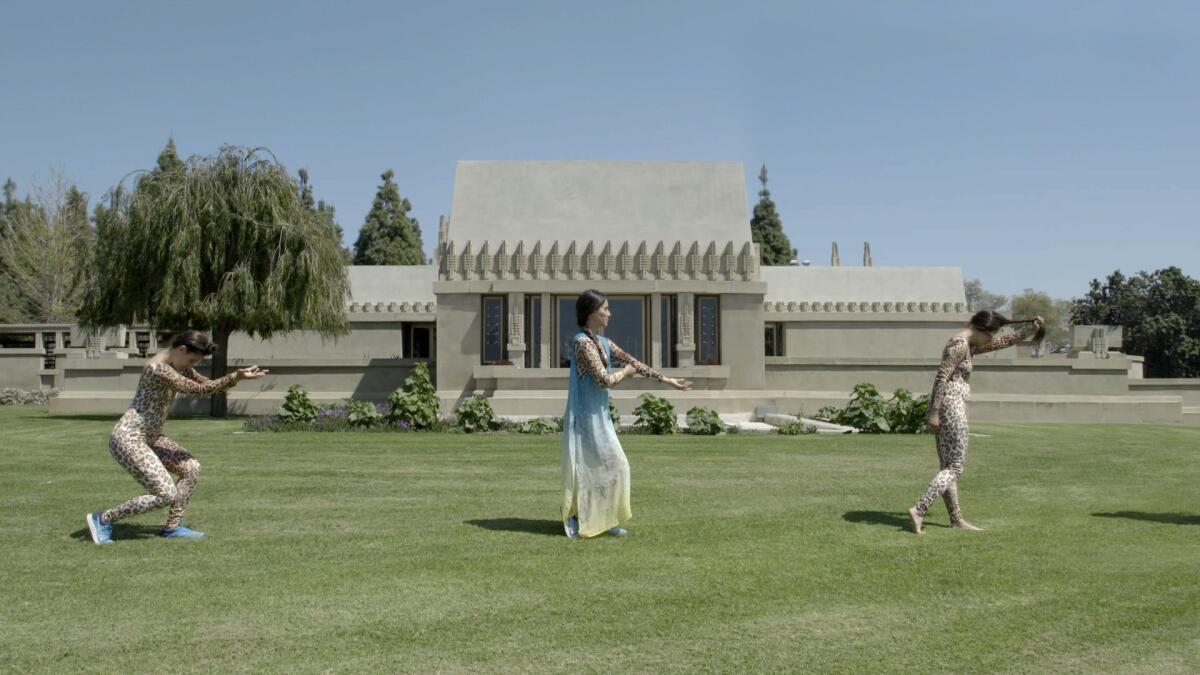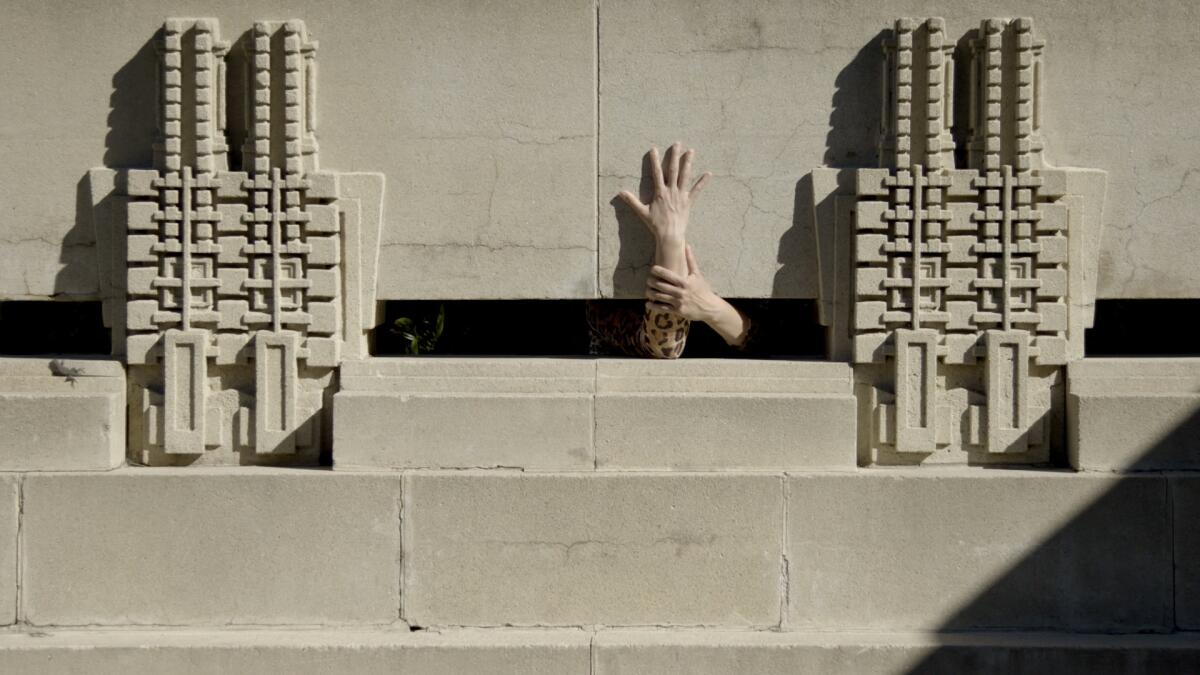Review: Nearly a century later, a video artist follows Frank Lloyd Wright’s Mayan footsteps
Mayan motifs began popping up in Los Angeles architecture in the 1920s. Frank Lloyd Wright’s Hollyhock House in Barnsdall Art Park (completed in 1921) and the Mayan theater downtown (1927) are early examples of particular kind of Latin American influence in L.A.
Clarissa Tossin takes up this curious relationship in her video “Ch’u Mayaa (Maya Blue),” part of the exhibition “Condemned to Be Modern” at the Los Angeles Municipal Art Gallery. The show is the gallery’s contribution to Pacific Standard Time: LA/LA, the Getty-sponsored art exhibitions that look at intersections between Los Angeles and Latin America.
Commissioned for the exhibition, Tossin’s nearly 18-minute video depicts dancer Crystal Sepúlveda on the grounds of the Hollyhock House, near the gallery in Barnsdall park. Clad in a flowing blue and gold sheath over a leopard-print body suit, Sepúlveda interacts with the building and surrounding gardens in gestures inspired by ancient Mayan depictions of the gods. The color blue refers to the azure pigment found in Mayan pottery and murals; the animal print is likely a reference to jaguar gods.
Sepúlveda moves deliberately through the house and gardens, running her hands across its concrete surfaces, inserting her body in various formations along a colonnade, striking yoga-like poses near a fountain or propping herself up in a window alcove. In certain sequences, the footage is edited so that she appears doubled or tripled, as if there are three or four dancers.


SIGN UP for the free Essential Arts & Culture newsletter »
In one striking scene, only her hands emerge from a small crevice in the concrete. Nearby, perched on some Maya-inspired decorative trim, is a small black lizard. In what can only be a serendipitous moment, Sepulveda’s hands echo the movement of the lizard, an effect enhanced by staccato editing that makes her gestures appear more sudden and jerky.
The soundtrack is spare, a percussive mix of flute, drums and, as the piece progresses, dramatic thunder and heartbeat sounds. The dancer’s movements become more violent as well, culminating in sequences in which she repeatedly appears to fall as if gunned down, or rolls down stairs as if dead.
Tossin, who has also created works about the Mayan theater, is clearly interested in the mix of admiration and appropriation that accompanied U.S. architects’ use of Mayan motifs. By inserting a live body into one such space, she seeks to provide new context for these designs, tying them to living histories, indeed to living people. (Mayan language speakers can still be found in Latin America, along with L.A.)
Yet her intervention is just as inauthentic as Wright’s. Nowhere is this more apparent than in the shiny, stretchy surface of the jaguar-print body suit. Patently artificial, it is Tossin’s acknowledgment of the impossibility of recapturing anything authentically Mayan.
Wright’s use of Mayan imagery was a search for something exotic and “new”; Tossin’s work highlights what Wright overlooked or simply didn’t care about. He was able to draw so freely from Mayan culture because it was so little known. And it was so little known because so much was destroyed in violent conquest.
Los Angeles Municipal Art Gallery, Barnsdall Art Park, 4800 Hollywood Blvd. Through Jan. 28; closed Mondays-Wednesdays. (323) 644-6269, www.lamag.org.
Look for all past coverage of Pacific Standard Time at latimes.com/pst.
MORE ART NEWS AND REVIEWS
Hollywood & Highland censors sculpture in response to Weinstein scandal
Bellini masterpieces at the Getty make for one of the year's best museum shows
Performance artist Karen Finley inhabits Trump and talks Weinstein
The biggest entertainment stories
Get our big stories about Hollywood, film, television, music, arts, culture and more right in your inbox as soon as they publish.
You may occasionally receive promotional content from the Los Angeles Times.







